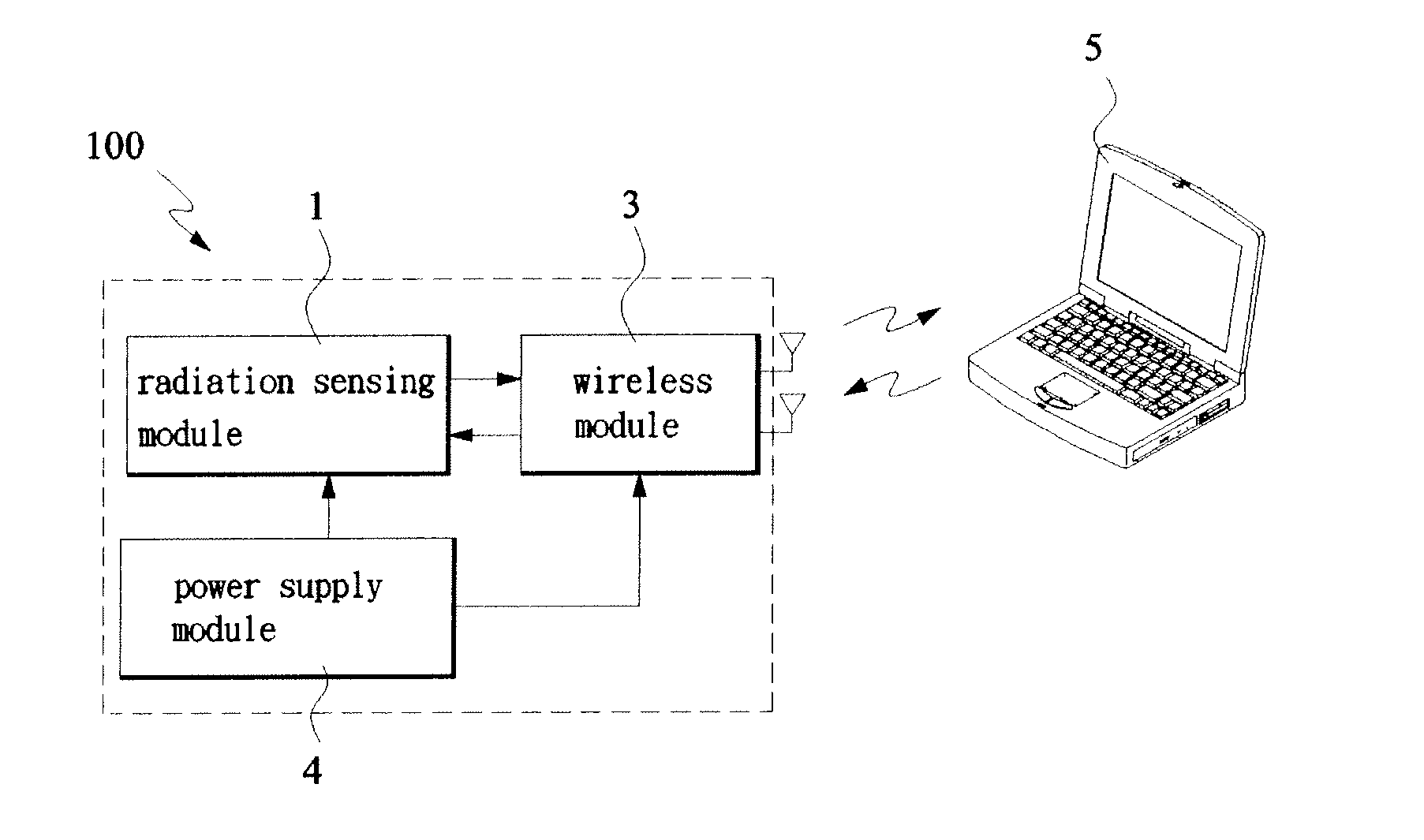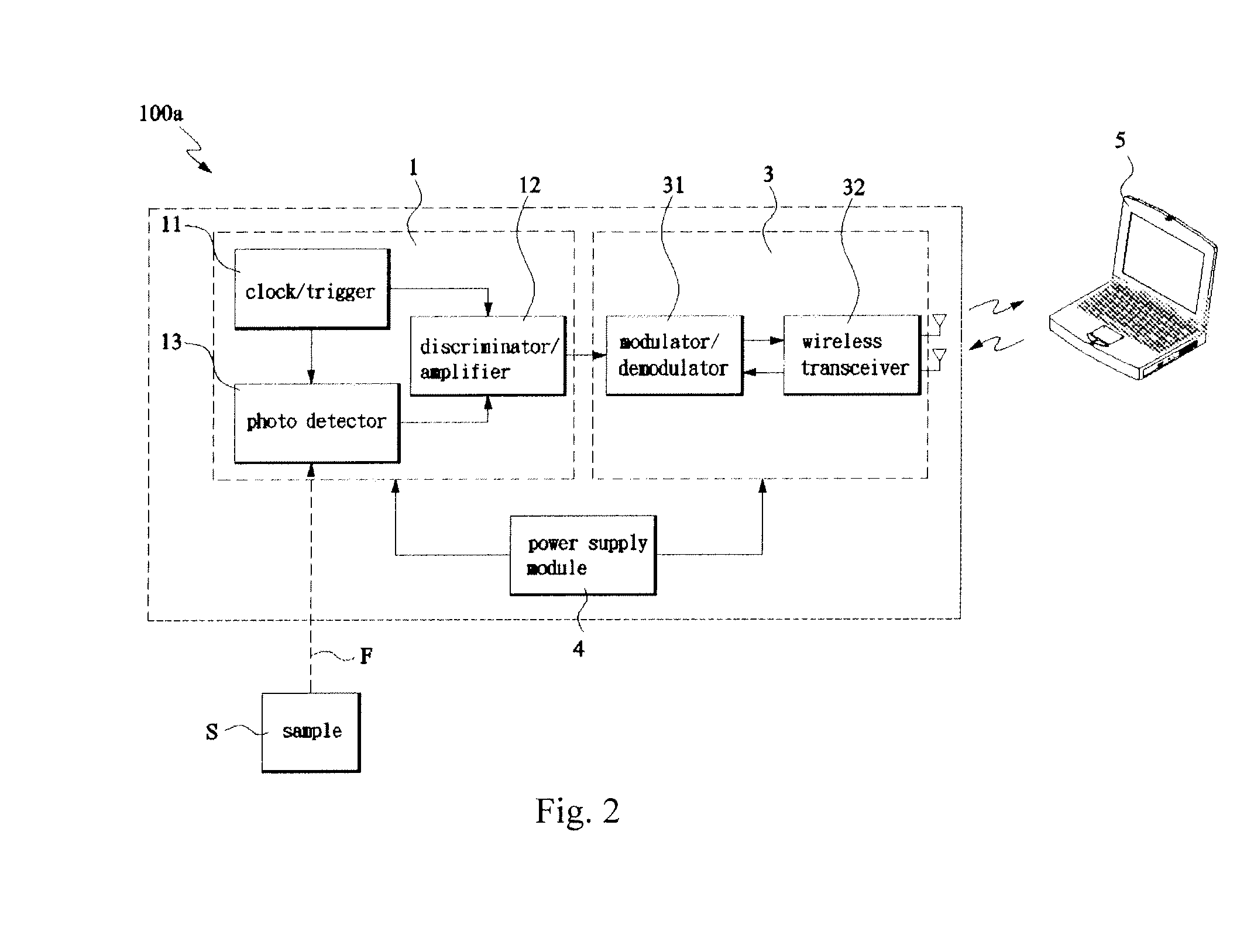Wireless radiation sensor
a wireless radiation sensor and sensor technology, applied in the field of wireless radiation sensors, can solve the problems of complex electronic components of devices, high cost, and high cost of radiation detection methods, and achieve the effects of minimizing design costs and time-to-market, minimizing per-part costs, and maximizing the cost-effectiveness of development and manufacturing
- Summary
- Abstract
- Description
- Claims
- Application Information
AI Technical Summary
Benefits of technology
Problems solved by technology
Method used
Image
Examples
embodiment 1
[0023]With reference to FIG. 2, the wireless radiation sensor 100a comprises an optimal module 1, a wireless module 3, and a power supply module 4.
[0024]The radiation sensing module 1 including a clock / trigger 11, a discriminator / amplifier 12 and a photo detector 13 (or a radiation detector). The clock / trigger 11 is adapted to generate a timebase and drives the components of the photo detector 13, such as laser diodes and APD. The discriminator / amplifier 12 is adapted to receive the output signal from the APD, which is gated by a signal from the clock / trigger 11, which can amplify and transmit the pulsed signal to the wireless module 3. Generally, laser beams are emitted onto a sample S by an external laser source, and the fluorescence signals F of the sample S, excited by these laser beams, can be detected by the radiation sensing module 1 to generate pulsed signals. Preferably, the laser beams and the detected fluorescence signals are in the visible (VIS) and near-infrared (NIR) s...
embodiment 2
[0029]FIG. 4 shows the second embodiment of the wireless radiation sensor 100b. As shown in the system diagram, the wireless radiation sensor 100b including an radiation sensing module 1, a wireless module 3 and a power supply module 4, of which the radiation sensing module 1 is further integrated with a microcontroller module 2, which is adapted to process the pulsed signals. The radiation sensing module 1, microcontroller module 2, wireless module 3 and power supply module 4, are functionally similar to those described in the first embodiment. Only the microcontroller module 2 is characterized below.
[0030]The microcontroller module 2 including an analog / digital (A / D) conversion unit 21 and a digital signal processing (DSP) unit 22. The microcontroller module 2 is electronically connected to the wireless module 3, and is capable of processing the pulsed signals. After signal processing, the pulsed signals are wirelessly transmitted by wireless module 3 to a computer for data analys...
PUM
 Login to View More
Login to View More Abstract
Description
Claims
Application Information
 Login to View More
Login to View More - R&D
- Intellectual Property
- Life Sciences
- Materials
- Tech Scout
- Unparalleled Data Quality
- Higher Quality Content
- 60% Fewer Hallucinations
Browse by: Latest US Patents, China's latest patents, Technical Efficacy Thesaurus, Application Domain, Technology Topic, Popular Technical Reports.
© 2025 PatSnap. All rights reserved.Legal|Privacy policy|Modern Slavery Act Transparency Statement|Sitemap|About US| Contact US: help@patsnap.com



